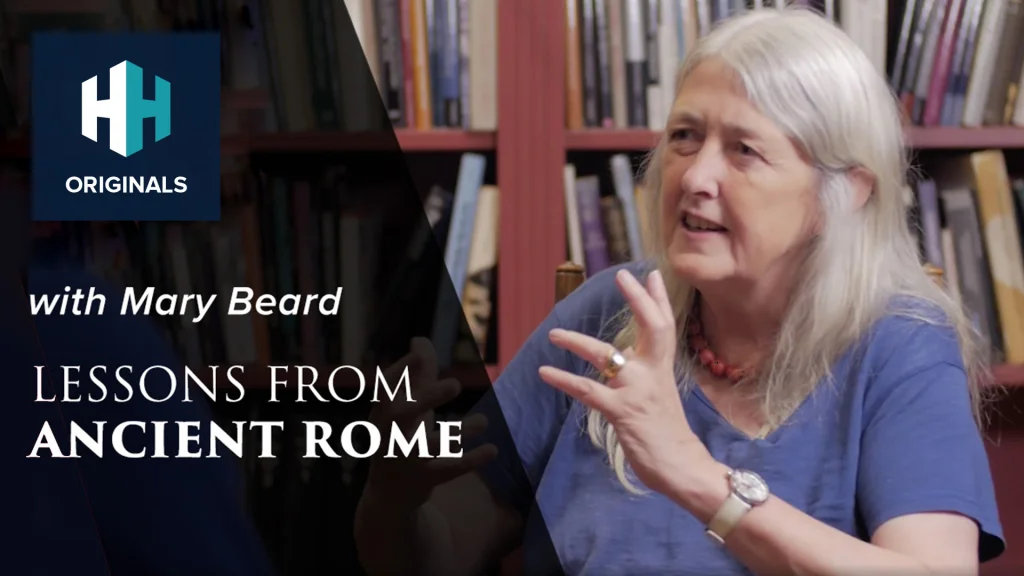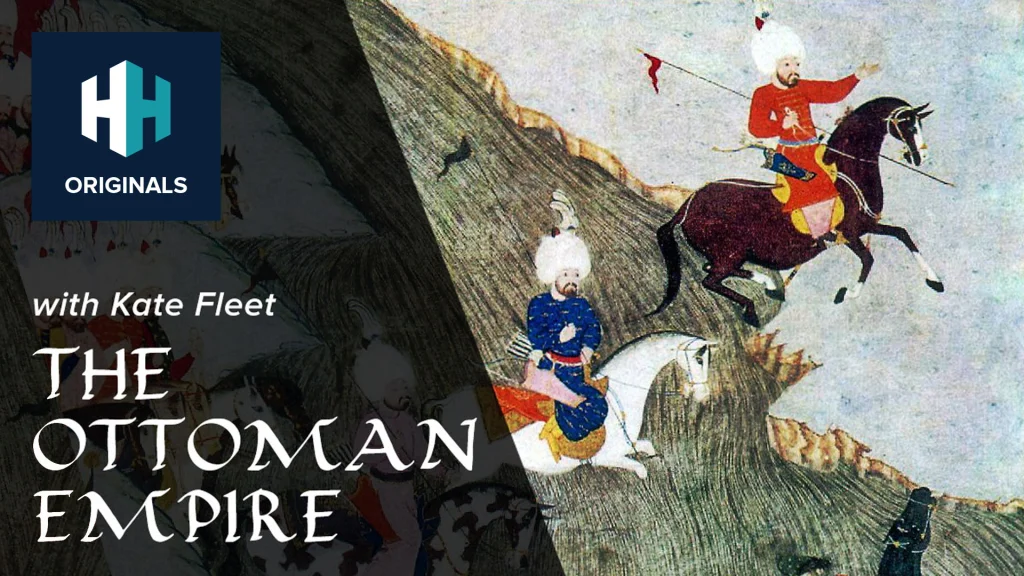If the slightly dubious calculations of ancient historians are to be believed, then the Roman Empire lasted 2,100 years from the days of semi-legendary founders Romulus and Remus. Its final end came in 1453 at the hands of the rising Ottoman Empire, and a Sultan who would afterwards style himself Qayser-i-Rûm: Caesar of the Romans.
The Byzantine Empire
By the age of the renaissance the last remnants of the old Roman Empire were on the final stretch of a millennium of steady decline. Rome itself had fallen in 476, and despite the odd resurgence from the remaining eastern half of the old Empire (known as the Byzantine Empire by some scholars) by the high Middle Ages Roman territory was largely confined to the area around modern Greece and the ancient capital of Constantinople.
 Watch Now
Watch NowThat massive city had been besieged many times during the long waning centuries of its power, but its first capture in 1204 had greatly accelerated the Empire’s decline. That year a force of bored and frustrated Crusaders had turned on their Christian brethren and sacked Constantinople, throwing down the old Empire and setting up their own Latin state where its remnants had been.

The Entry of the Crusaders in Constantinople
Some of Constantinople’s surviving noble families fled to the last remnants of empire and set up successor states there, and the largest was the Empire of Nicaea in modern Turkey. In 1261 the Nicaean Empire’s ruling family – the Laskaris – retook Constantinople from the western invaders and re-established the Roman Empire for the last time.
The rise of the Turks
Its final two centuries were spent desperately fighting Serbs Bulgarians Italians and – most crucially – the rising Ottoman Turks. In the mid-14th century these fierce cavalrymen from the east crossed into Europe and subdued the Balkans, which placed them in direct confrontation with the failing Roman Empire.
After so many centuries of decline and decades of plague and last-ditch battles there could be only one decisive winner, and by 1451 the Empire which had one covered the known world was confined to a few villages around Constantinople and the southern part of Greece.
 Watch Now
Watch NowWhat was more, the Ottomans had a new ruler, the ambitious 19 year-old Mehmed, who built a new seaside fortress that would cut off help arriving in Constantinople from the west – a clear indication of his aggression. The following year he sent armies into the Roman possessions in Greece, determined to pin down the their Emperor’s brothers and loyal troops there and cut off his capital.
A difficult task
The last Roman Emperor was Constantine XI, a man who shared a name with the famous founder of Constantinople. A fair and effective ruler, he knew that he would need help from western Europe to survive. Unfortunately the timing couldn’t have been worse.

Constantine XI Palaiologos, the last Byzantine Emperor.
On top of the ethnic and religious hatred between Greeks and Italians, France and England were still fighting the Hundred Years War, the Spanish were busy completing the Reconquista and the kingdoms and empires of central Europe had their own wars and internal struggles to deal with. Hungary and Poland, meanwhile, had already been defeated by the Ottomans and severely weakened.
Though some Venetians and Genoan troops arrived, Constantine knew that he would have to hold out for a long time before any relief could reach him. In order to do this, he took proactive steps. The Ottoman ambassadors were slaughtered after negotiations failed, the harbour mouth was strengthened with a great chain, and the ancient walls of the Emperor Theodosius were strengthened to deal with the age of cannon.
 Watch Now
Watch NowConstantine had just 7,000 men at his disposal, including volunteers from across Europe, a force of experienced Genoans and – interestingly – a group of loyal Turks who would fight to the death against their compatriots.
The approaching besiegers numbered between 50 and 80,000 and included many Christians from the Ottoman’s western possessions, and seventy giant bombards designed to break the walls that had stood firm for over a thousand years. This imposing force arrived on 2 April and began the siege.

Modern painting of Mehmed and the Ottoman Army approaching Constantinople with a giant bombard, by Fausto Zonaro.
The (final) Siege of Constantinople
The idea that Constantinople was already doomed has been disputed by some modern historians. Despite the mismatch of numbers, its walls on land and sea were strong, and the first weeks of the siege were promising. The sea chain did its job, and frontal attacks on the land wall were all repulsed with very heavy casualties.
By 21 May Mehmed was frustrated and sent a message to Constantine – if he surrendered the city then his life would be spared and he would be allowed to act as the Ottoman ruler of his Greek possessions. His reply ended with,
“we have all decided to die with our own free will and we shall not consider our lives.”
Following this response, many of Mehmed’s advisers begged him to lift the siege but he ignored them all and prepared for one more massive assault on 29 May. The night before Constantinople held one last great religious ceremony, where both Catholic and Orthodox rites were performed, before his men prepared for battle.

A map of Constantinople and the dispositions of the defenders and the besiegers. Credit: Semhur / Commons.
The Ottoman cannon focused all their fire on the new and weaker section of the land wall, and finally created a breach which their men poured into. At first they were pushed back heroically by the defenders, but when the experienced and skilled Italian Giovanni Giustiniani was cut down, they began to lose heart.
 Watch Now
Watch NowConstantine, meanwhile, was in the thick of the fighting, and he and his loyal Greeks were able to push back the elite Turkish janissaries. Gradually, however, the numbers began to tell, and when the Emperor’s exhausted soldiers saw Turkish flags flying over some sections of the city they lost heart and ran to save their families.
Others threw themselves off the city walls rather than surrender, while legend states that Constantine cast aside his robe of Imperial purple and threw himself into the advancing Turks at the head of his last men. What is certain is that he was killed and the Roman Empire died with him.

Painting by the Greek folk painter Theophilos Hatzimihail showing the battle inside the city, Constantine is visible on a white horse
A new dawn
The Christian inhabitants of the city were slaughtered and their churches desecrated. When Mehmed rode though his devastated city in June, he was famously moved to tears by the site of the once-mighty capital of Rome half-populated and lying in ruins. The great Hagia Sofia church was converted into a Mosque, and the city was renamed Istanbul.
It remains part of the modern state of Turkey, which is now all that remains of the Empire which claimed to be a third Rome after 1453. After Mehmed restored order the remaining Christians of the city were reasonably well-treated, and he even elevated Constantine’s surviving descendants to high posts in his regime.
 Listen Now
Listen NowPerhaps the most positive outcome of the fall was the Italian ships managing to save several civilians from the fall, including scholars who would bring the learning of ancient Rome to Italy, and help to kick-start the Renaissance and the rise of European civilisation. As a result, 1453 is often thought to be the bridge between the Medieval and Modern worlds.















